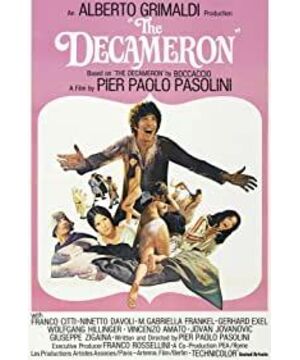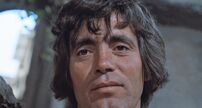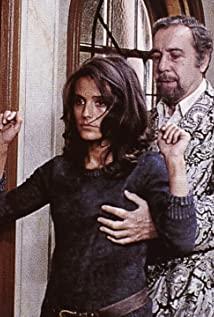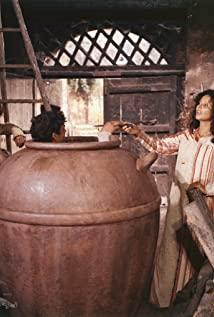"The Decameron" is a great work by Italian writer Boccaccio during the Renaissance. The book contains 100 stories. These stories aimed at the church, exposing the hypocrisy of the church in a witty and humorous way, criticizing religious theocracy and asceticism, praising beautiful love, and calling for the liberation of human nature. The film version of "Decameron" distilled the essence of the original work, but it also caused widespread controversy due to overly demonizing the church. The core of the controversy naturally concentrated on the director Pierre Paul Pasolini. Pierre Paulo Pasolini, poet, director, communist, and homosexual, he is full of legends. Before the filming of "Decameron", Pasolini had vilified religion because of the content of the film. He was imprisoned in harmony with society. These experiences did not shake the will of the atheist. With the help of the trilogy of life, he released his long backlog of emotions wantonly. "The Decameron" was a film that subverted the mainstream ideology at the time. Although the film changed his famous work, Pasolini did not shoot him as an official cultural epic, but from a folk perspective. To shoot this literary masterpiece from the attitude of a poor man, all the roles in the movie are played by amateur actors. The eight selected stories in the film are absurd, funny, vulgar, and even a bit like low-level porn jokes. The absurd and unruly story embodies the essence of the original work. The most reflected in movie stories is the criticism of asceticism. Pasolini’s films have never lacked nakedness and sex, and he himself does not shy away from these contents. "Hungry" nuns, priests who can change magic, this The two stories embodied the nuns and priests' desire for sex, exposed the hypocrisy of the church, and also hinted at the truth that abstinence only brings stronger desires. There are a large number of stories praising beautiful love in the original works. These love stories cross races and classes and demonstrate the humanistic spirit of equality and fraternity. There are also large passages in the movie to express this humanistic sentiment. "The Decameron" shot by Pasolini is completely different from the original work hundreds of years ago. Asceticism, feudalism, and theocratic rule have long ceased to exist. However, Pasolini's filming of "Decameron" is by no means as simple as a remake of a masterpiece. Putting the movie into the background of the times and combining Pasolini's personal experience, you will find other deep meanings in the movie. On the surface, the film tells the story of the folks being fooled by the church, but the church as the authority is at ease. At a deeper level, Pasolini’s dissatisfaction with the bourgeoisie in power, he himself deeply doubts the material society constructed by the bourgeoisie. The civilians who are fooled in the film seem to be the proletariat in the real world, and class interests. The opposition is the concentrated contradiction shown in the film. "Decameron" is also a subversive filming technique. In addition to the use of amateur actors, Pasolini insisted on using natural light during the filming process, which made the film look more integrated and had a feeling of returning to the original, Pasolini The remake of Ninety’s masterpiece may seem frivolous, but it really captures the taste of medieval works. The props, costumes, and scenery of the movie reflect the elements of the times everywhere, as if they are pictures of medieval style. Some people commented that Pasolini broke through the bottleneck of post-war Italian neorealism films. Indeed, Pasolini’s trilogy of life pursues retro content, uses retro to refute tradition and dogma, and reflects a strong personal touch. The trilogy of life, where "life" is embodied, is a release of the most primitive desires of mankind, allowing people to return to the original essence and break free from the shackles that restrain desires. As a poet and director, Pasolini longs for the release of life, perhaps only in this way can he create truly great works of art in his mind. Among the eight stories in Decameron, one is very special. It tells a painter who made murals for the church. The painter completed the work according to the church's intentions. However, in his dream, he seemed to have dreamed of the Virgin Mary high above. Ya, there are priests sitting around her, some naked men and women are being driven into hell. After waking up, the painter looked at his finished work and muttered: "If just dreaming of a work of art is even better than creating a work of art, then why create it?" This dream and this The sentence is perhaps the most interesting thing in the whole movie. The scene in the painter’s dream seems to be a mural, and this mural is the real great work in the painter’s heart, and the painting on the wall is just a lifeless picture. artwork. Because its creation is bound by the rules and regulations of the church, this is just a work under dogmatism. Only by letting go of all the shackles and releasing the desire of life can we create greatness. The sentence at the end of the painter is the final line of the film. This sentence may be what Pasolini said to himself (the painter in the film) (Played by Pasolini himself), maybe it is for everyone, maybe Pasolini truly understood the true meaning of creation, and only after the trilogy of life came the "Sa Luo
Welcome to pay attention to my public account-shadow stack
View more about The Decameron reviews











